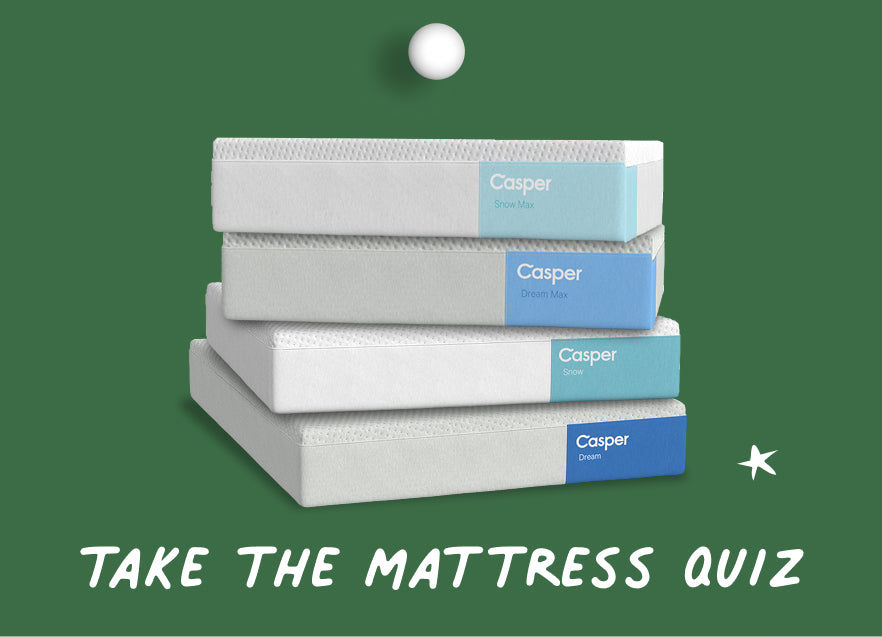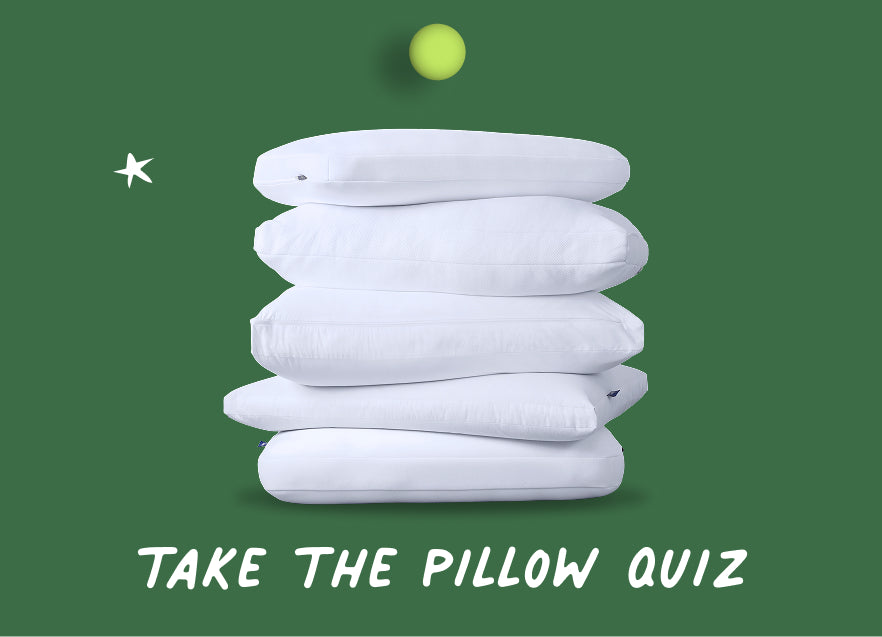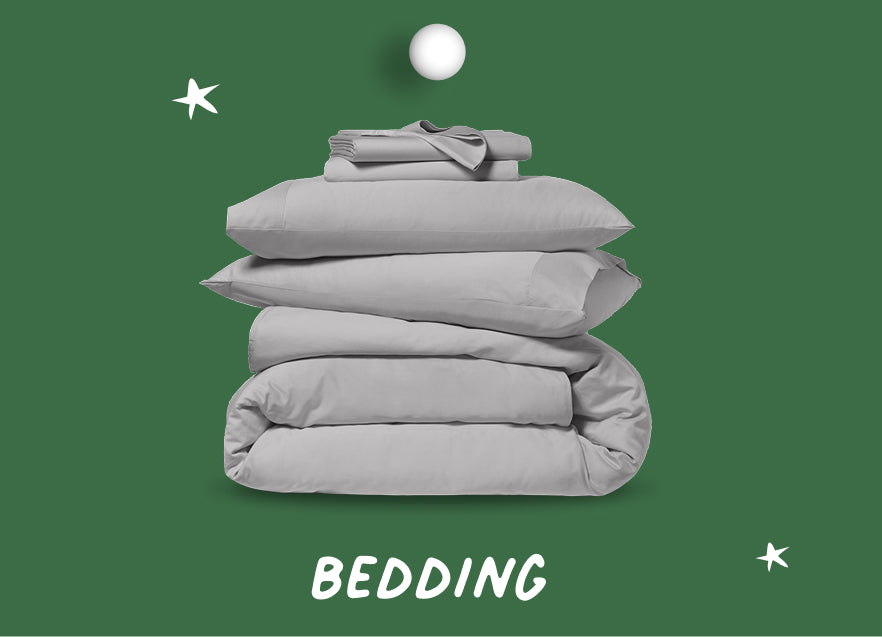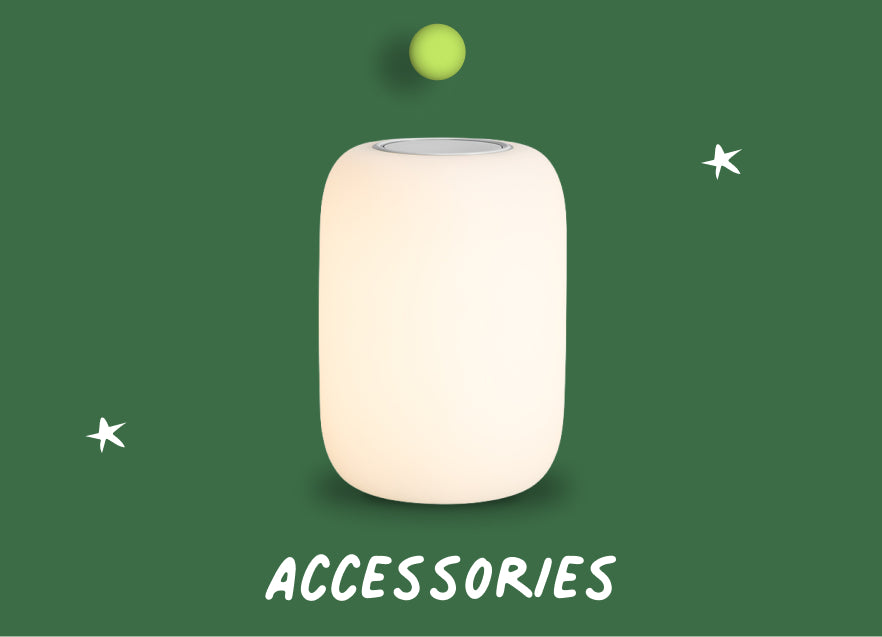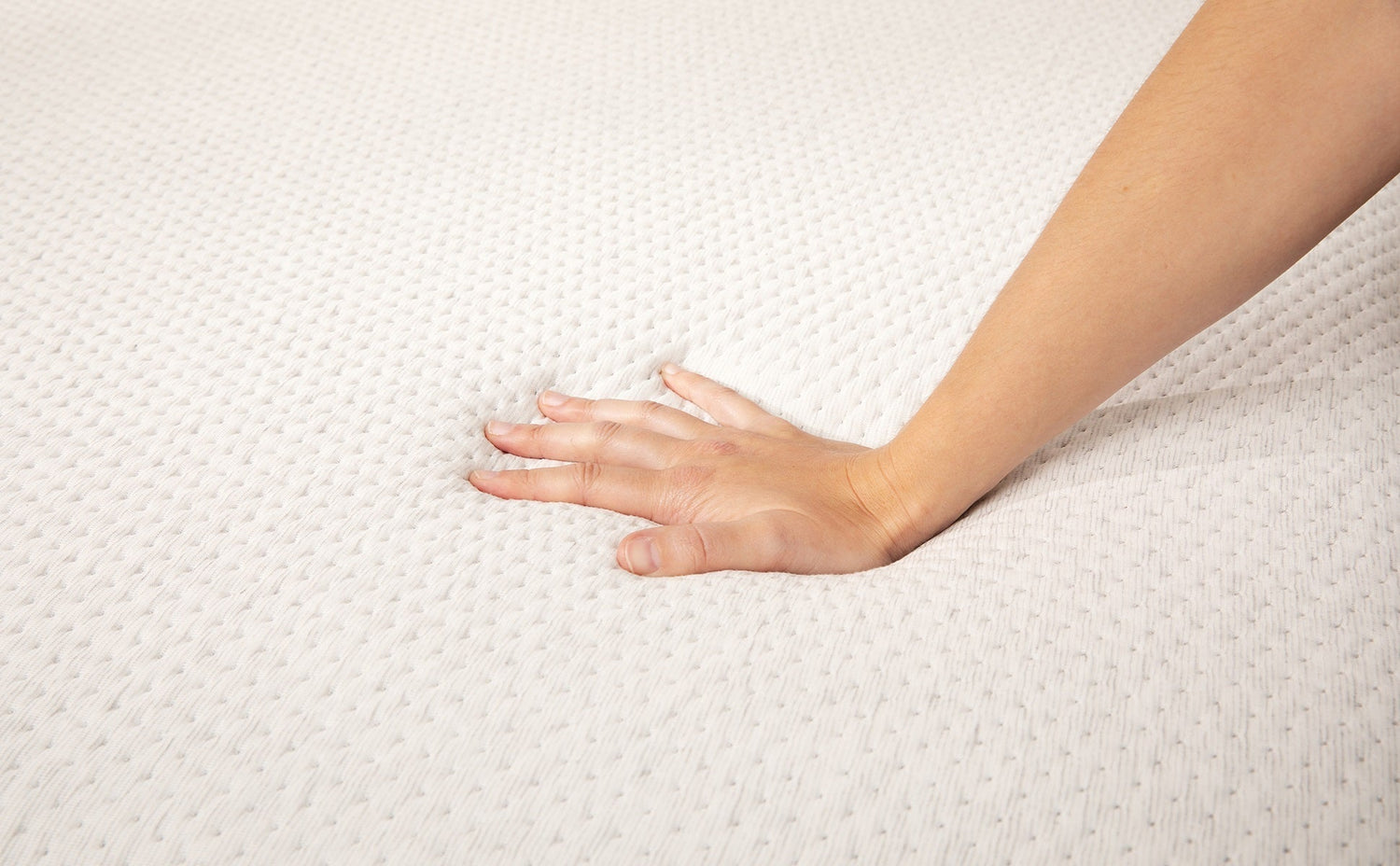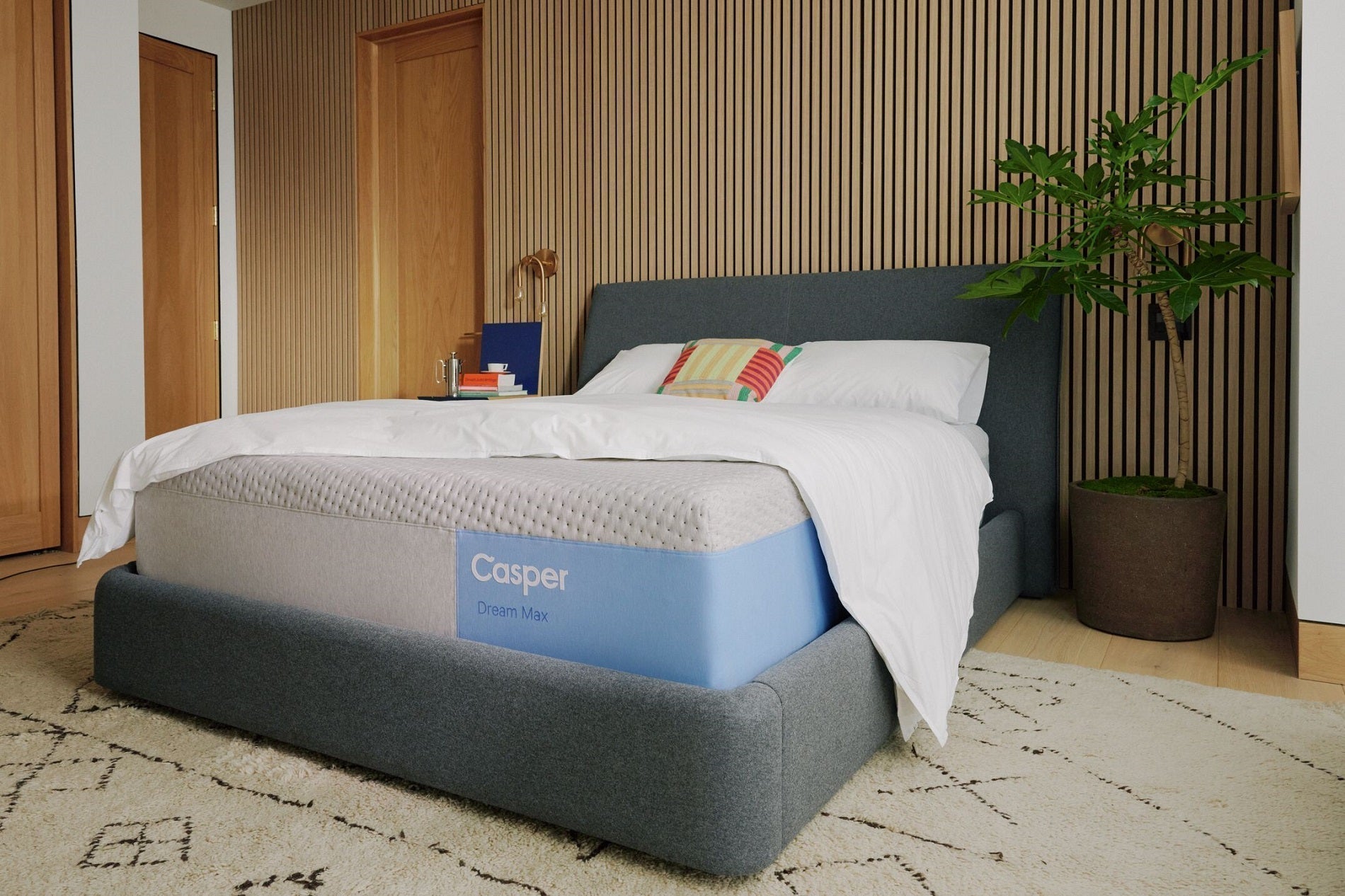A mattress with pressure relief cushions the body, evenly distributes weight, and reduces tension on the hips, shoulders, and back. The idea is to support spinal alignment and minimize pain, discomfort, and frequent wake-ups.
If you're in the market for a new mattress, you've likely come across models that claim to relieve pressure. But what is pressure relief in a mattress, why does it matter, and is it something you really need?
Pressure relief can benefit pretty much anyone. It provides cushioning while reducing tension and distributing weight evenly to support healthy spinal alignment.
Keep scrolling for a deep dive into what pressure relief means, how it works, and what to look for when buying a supportive mattress.
What Is Pressure Relief?
When talking about mattresses, pressure relief is the ability of the layered materials and foundational core to support the weight of your body, prevent strain on prominent joints, and keep the spine in a neutral position. This not only helps you sleep comfortably but also reduces sleep-related aches and pains.1
Disperses Body Weight Over a Larger Area
Different parts of your body have different weights. Without proper support, heavier areas will sink down into the mattress, which can make it less comfortable overall and strain your back or hips. What pressure relief does is broaden the impact of each body part so that no single point bears too much load.2
Reduces Peak Force on Sensitive Areas
By evenly distributing weight across the surface of the mattress, a pressure-relieving design with comfort layers and a supportive core molds around the curves of your body to reduce force on sensitive body parts. This means less strain on your hips, shoulders, and lumbar (lower-back) region.3
Prevents Tension Buildup
Beyond distributing body weight across the mattress, pressure relief brings cushioning to contact points (think head, shoulders, back, hips, and knees). This extra cradling keeps everything balanced and minimizes strain on joints while helping the spine stay in a neutral position.4
Why Pressure Relief Matters in a Mattress
What does all of this mean? In short, the right balance offers major benefits for your physical health and sleep quality. Once you start sleeping better, you might even notice improvements in your mental well-being.
Enhanced Sleep Quality
When your weight is evenly distributed on a mattress, you're more comfortable lying down and less likely to toss and turn. By reducing restlessness, pressure relief can help you fall asleep quicker and lower the number of awakenings you have throughout the night, resulting in more restful sleep.5,6

Spinal Alignment and Back Health
The right mattress will have a good balance of cushioning and support with a core that resists sagging. This promotes spinal alignment by keeping the spine in a neutral position, which is vital for back health.7
Circulation and Pain Prevention
Pressure relief also alleviates concentrated force by keeping weight balanced and preventing sinking. This allows for better blood circulation throughout the body, which can help you avoid tingling, numbness, and pressure-related pain or soreness during and after sleep.8,9,10
Improved Mental Well-Being
It's almost impossible to untangle lack of sleep, poor sleep quality, sleep-related physical discomfort, and chronic pain from mental health struggles. The point being, addressing these issues with a high-quality mattress (like one from Casper!) that promotes better rest can also have psychological benefits.
Research shows that improving your sleep can lower the risk of depression and other mood disorders while promoting a more positive outlook and better overall quality of life.11,12
How Pressure Relief Works (Comfort System + Support Core)
Here's a breakdown of how pressure relief on a mattress works:
- Comfort layers that cradle – On the surface of the mattress is typically a softer comfort layer that contours to the shape of your body and offers responsive pressure relief to reduce stress on the hips, knees, shoulders, and lower back.
- Support core that stabilizes – Underneath the surface are deeper layers and a supportive core that stabilize the mattress and absorb pressure to avoid a "hammock" effect by preventing you from sinking into the center.
- Balanced design – True pressure relief on a mattress always pairs cushioning with alignment support. This balanced design helps stabilize your sleeping posture by keeping your spine in a neutral position and preventing unnatural twisting and resulting strain.

Personalized Pressure Relief by Sleep Profile
One person's needs for pressure relief aren't the exact same as the next person's. The ideal level of firmness and contouring varies by sleeping position, body weight, and whether you sleep with a partner.
Side Sleepers
Side-lying is the most common sleeping position for adults.13 Side sleepers do well with medium-firm mattresses (about a 7 out of 10 on the firmness scale) to prevent their hips from sinking and help maintain a straight spine. But they can benefit from a softer surface, like a pillow top or responsive memory foam layer.
Back Sleepers
Back sleepers can benefit from moderate contouring and consistent lumbar support to keep the lower back from arching. A medium-firm to firm mattress is best (a 7 or 8 out of 10 on the firmness scale).14,15
Stomach Sleepers
Stomach sleepers will want a pressure-relieving mattress with a solid core to prevent their midsection from sinking. To avoid aches and pains while sleeping in this position, choose a medium-firm mattress. For lighter sleepers, this might be a 6 or 7 on the firmness scale. For heavier bodies, a 7 or 8 can be better to reduce sinking.
Combination Sleepers
Switching positions throughout the night (also known as tossing and turning) could be a sign of a poor-quality mattress that lacks support. However, if you sleep comfortably in multiple positions or fall asleep one way and wake up another, a medium-firm mattress with adequate pressure relief is still the right way to go.
Couples
If you sleep with a partner, a medium-firm mattress with edge support is best. This will evenly distribute the weight of each person while preventing either side from dipping down.16
Different Body Weights
Lighter sleepers may need a slightly softer mattress with comfort layers to take pressure off the hips and shoulders. Meanwhile, heavier sleepers generally need a firmer design with a more supportive build to keep weight evenly distributed and prevent the mattress from bottoming out—when the foam and springs compress all the way down under the weight of the surface.17
Signs Your Mattress Lacks Pressure Relief
If your mattress is too soft or lacks pressure relief, you might have trouble dozing off, staying soundly asleep, or getting high-quality, restorative shut-eye.18
You may also wake up with sore shoulders, aching hips, or lower-back pain.19 Without adequate weight distribution, you might sink into the mattress, which can restrict blood flow and result in tingling or numbness in your arms or legs.20

How to Choose a Mattress for Better Pressure Relief
So, how do you know if a mattress will offer pressure relief? Here's what to keep in mind when choosing a mattress.
Match Firmness to Position and Build
Depending on your preferred sleeping position, body weight, and whether you sleep with a partner, the ideal firmness level for most adults will range from about a 6 to an 8 out of 10 on the firmness scale.21
Based on your unique needs and body type, look for a mattress that blends plush contouring with a firm core. Hybrid models often have what's called zoned support, meaning they're firmer at the hips and lower-back area to resist sinking and softer under the shoulders to alleviate pressure.
Assess Comfort and Support Together
Overall comfort is just as important as support and firmness. Look for a mattress that relieves pressure to help you relax into sleep without letting your spine drift into an unnatural position.23
Confirm Consistent Performance
The best mattresses continue to provide pressure relief and promote spinal alignment night after night for several years. On the other hand, a poor-quality mattress might break down faster and lose its supportive, body-conforming abilities sooner than later.24
Pressure-Relieving Mattresses from Casper
When you're ready to level up your sleeping situation, Casper has you covered. Our premium mattresses pair contouring comfort systems with supportive cores to evenly distribute weight, reduce pressure, and keep your spine aligned. You'll feel the difference on night one, and over time, you can count on less strain on your hips, reduced back pain, and better sleep.
Sources:
- Journal of Tissue Viability. Effect of mattress bedding layer structure on pressure relief performance and subjective lying comfort. https://www.sciencedirect.com/science/article/abs/pii/S0965206X23000050
- Journal of Biomechanics. Pressure distribution on mattresses. https://pubmed.ncbi.nlm.nih.gov/8308053/
- Applied Ergonomics. Effect of prescribed sleep surfaces on back pain and sleep quality in patients diagnosed with low back and shoulder pain. https://www.sciencedirect.com/science/article/abs/pii/S0003687010000724
- Journal of Social Health and Sciences. Effects of mattress firmness and usage duration on low back pain: a hospital-based study from Lahore. https://www.logixsjournals.com/articles/53
- Journal of Orthopaedics and Traumatology. What type of mattress should be chosen to avoid back pain and improve sleep quality? Review of the literature. https://pmc.ncbi.nlm.nih.gov/articles/PMC8655046/
- Applied Ergonomics. Effect of prescribed sleep surfaces on back pain and sleep quality in patients diagnosed with low back and shoulder pain. https://www.sciencedirect.com/science/article/abs/pii/S0003687010000724
- CADTH (Canadian Agency for Drugs and Technologies in Health) Health Technology Review. Therapeutic Mattresses for Chronic Pain. https://canjhealthtechnol.ca/index.php/cjht/article/view/rc1415/612
- Clinical Biomechanics (Bristol). Engineering the perfect mattress: The influence of substrate mechanics on deep tissue stresses in supine. https://pubmed.ncbi.nlm.nih.gov/37897845/
- PLOS One. Relationship between a pressure redistributing foam mattress and pressure injuries: An observational prospective cohort study. https://journals.plos.org/plosone/article?id=10.1371/journal.pone.0241276
- Journal of the International Association for the Study of Pain. Bed design and its effect on chronic low back pain — A limited controlled trial. https://journals.lww.com/pain/abstract/1981/02000/bed_design_and_its_effect_on_chronic_low_back_pain.9.aspx
- Frontiers in Psychology. Good Sleep Quality Improves the Relationship Between Pain and Depression Among Individuals With Chronic Pain. https://pmc.ncbi.nlm.nih.gov/articles/PMC8138032/
- Sleep Medicine Reviews. Improving sleep quality leads to better mental health: A meta-analysis of randomised controlled trials. https://pmc.ncbi.nlm.nih.gov/articles/PMC8651630/
- Nature and Science of Sleep. Sleep positions and nocturnal body movements based on free-living accelerometer recordings: association with demographics, lifestyle, and insomnia symptoms. https://www.dovepress.com/sleep-positions-and-nocturnal-body-movements-based-on-free-living-acce-peer-reviewed-fulltext-article-NSS
- Journal of Orthopaedics and Traumatology. What type of mattress should be chosen to avoid back pain and improve sleep quality? Review of the literature. https://pmc.ncbi.nlm.nih.gov/articles/PMC8655046/
- Scientific Reports. A method for calculating vector forces at human-mattress interface during sleeping positions utilizing image registration. https://www.nature.com/articles/s41598-024-66035-8
- Journal of Chiropractic Medicine. Effects of Mattress Material on Body Pressure Profiles in Different Sleeping Postures. https://pmc.ncbi.nlm.nih.gov/articles/PMC5310954/
- Biomedical Sciences Instrumentation. Weight and Pressure Distribution on Mattress Surfaces Varies Between Children and Adults. https://www.researchgate.net/publication/352227080_weight_and
- Journal of Manipulative and Physiological Therapeutics. Mattress Coil Spring Fatigue and Weight-Bearing Support: Comparison of Weight-Bearing and Non–Weight-Bearing Springs. https://www.sciencedirect.com/science/article/abs/pii/S0161475422001166
- Applied Sciences. Investigating the Impact of Long-Term Use on Mattress Firmness and Sleep Quality—Preliminary Results. https://www.mdpi.com/2076-3417/14/21/10016
- Clinical Biomechanics (Bristol). Engineering the perfect mattress: The influence of substrate mechanics on deep tissue stresses in supine. https://pubmed.ncbi.nlm.nih.gov/37897845/
- Nature and Science of Sleep. Sleep positions and nocturnal body movements based on free-living accelerometer recordings: association with demographics, lifestyle, and insomnia symptoms. https://www.dovepress.com/sleep-positions-and-nocturnal-body-movements-based-on-free-living-acce-peer-reviewed-fulltext-article-NSS
- WORK. Effects of sleeping position on back pain in physically active seniors: A controlled pilot study. https://journals.sagepub.com/doi/full/10.3233/WOR-152243
- Applied Ergonomics. Effect of prescribed sleep surfaces on back pain and sleep quality in patients diagnosed with low back and shoulder pain. https://www.sciencedirect.com/science/article/abs/pii/S0003687010000724
- Journal of the Association of Physicians of India. The foam mattress-back syndrome. https://pubmed.ncbi.nlm.nih.gov/11198791/

